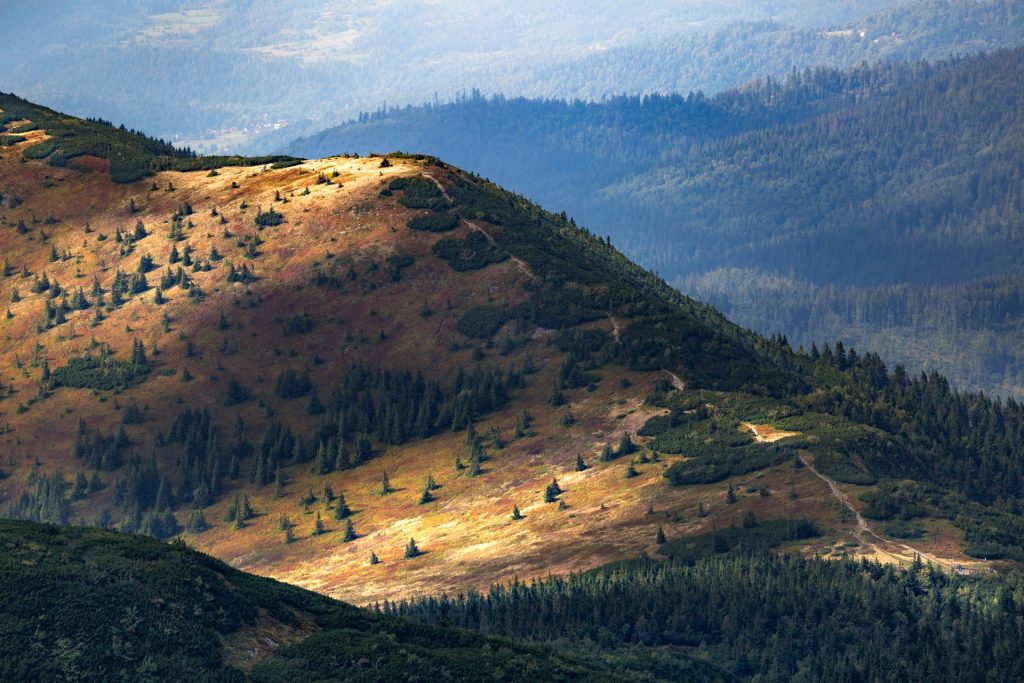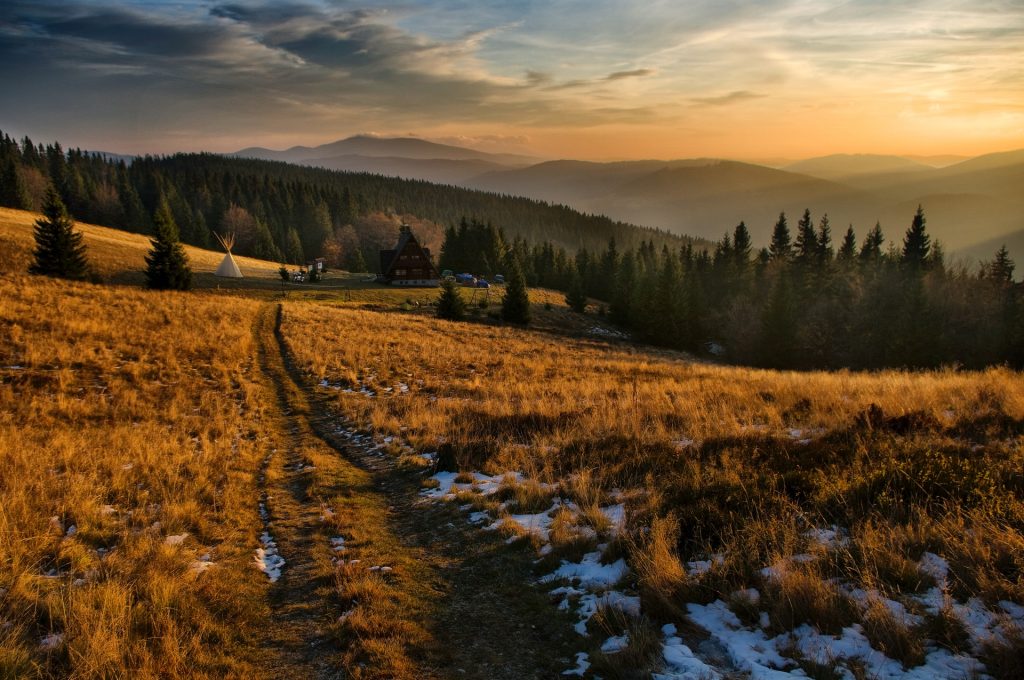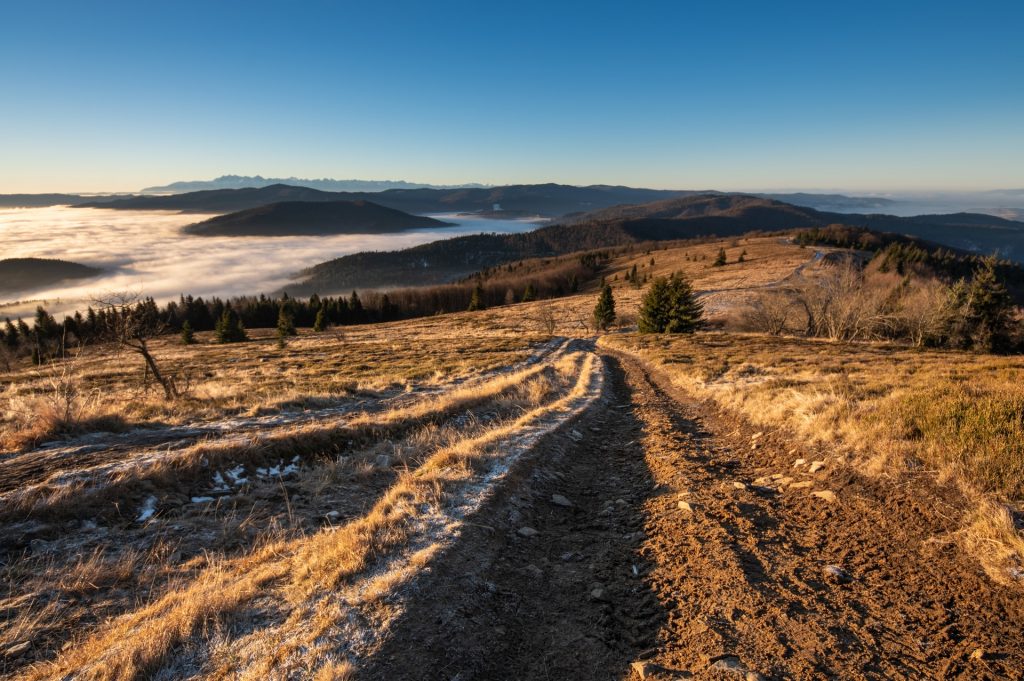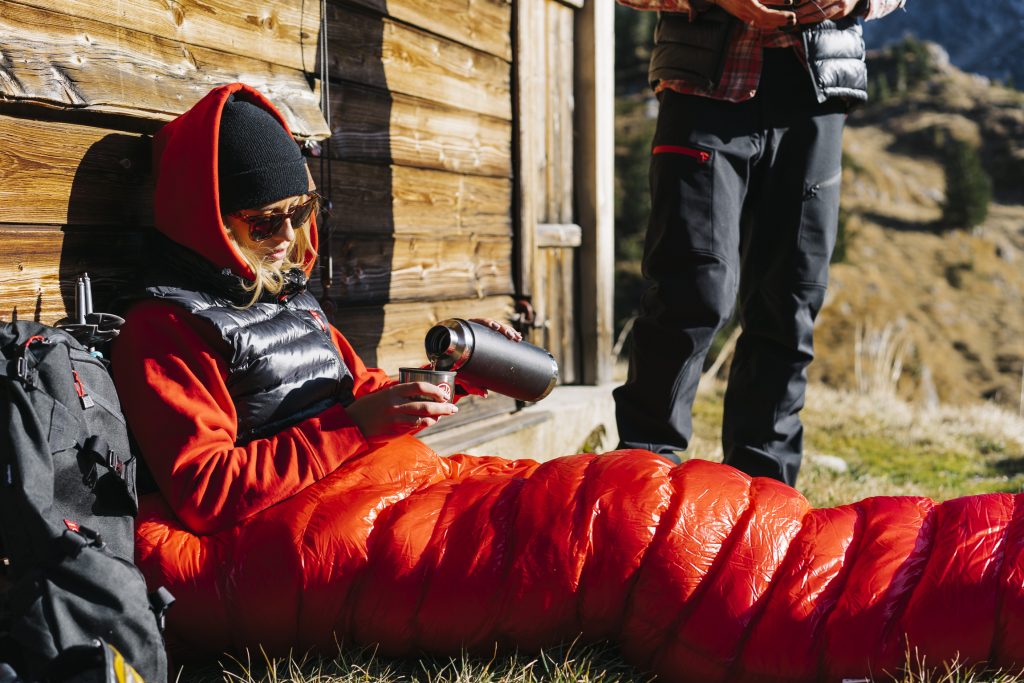
MAIN BESKID TRAIL - PRACTICAL GUIDE. WHAT TO BRING AND HOW TO PREPARE?
The Main Beskid Trail is over 500 km long. It takes an average of four weeks to complete. During such a hike, you need to be prepared for any situation and have everything with you, right? Well, not exactly - or at least you can't let the "most necessary things" become excessively heavy. A multi-day hike with an overly packed backpack is not enjoyable. So how do you pack in a way that ensures you have everything you need without your equipment weighing you down? Here are some practical tips!
WHAT WILL YOU LEARN FROM THIS POST?
- What routes are included in the Main Beskid Trail?
- What should you take on the GSB hike?
IN BRIEF
The Main Beskid Trail is a 502 km route that connects Ustroń in the Silesian Beskids with Wołosate in the Bieszczady Mountains. It can be completed in approximately 3-4 weeks. This longest trail in Poland is rich in shelters and tourist bases, which allows you to lighten the load of the equipment you need to carry. For a comfortable hike, the most important things are comfortable shoes and clothing, as well as a lightweight backpack.
THE MAGIC OF THE MAIN BESKID TRAIL
The Main Beskid Trail, named after Kazimierz Sosnowski, is the longest trail in the Polish mountains. It connects Ustroń in the Silesian Beskids in the west with Wołosate in the Bieszczady Mountains in the east, passing through six major ranges of the Beskids. Several peaks along the trail are part of the Polish Crown of the Mountains. Between the first red dot that marks the beginning of the trail and the one that marks its end, you will face 21 days (the time required to earn the GSB GOT Diamond Badge) of not only strenuous effort but also breathtaking views and unforgettable experiences. Three weeks of constant hiking is a challenge that brings great satisfaction. However, to ensure that this 502-kilometer route through picturesque mountains and valleys is primarily a pleasure, you should prepare well for it.

ROUTE LOGISTICS
The best time to hike the GSB is during the summer vacation period. From June to September, the warm weather, long days, and open shelters and campsites facilitate smooth progress. Of course, there are brave souls who take on this challenge in winter as well, but it goes without saying that it requires considerable experience and... a bit of determination.
The Main Beskid Trail is mostly well-marked, making it difficult to get lost. It also offers plenty of shelters and tourist bases where you can spend the night and passes through villages where you can easily replenish supplies. The difficulties only begin in the Low Beskids, where human settlements are scarce. To make matters worse, a significant portion of the 130 km trail in this range is located within the Magura National Park, where camping is not allowed, of course. It is worth keeping this in mind when planning your route, not only to have a place to sleep but also to avoid being in the woods (literally and figuratively) without food.
EQUIPMENT FOR GSB
The most important piece of equipment for the GSB is, of course, a comfortable backpack. The recommended capacity is 40-60 liters, but it is important not to overpack it - the optimal weight should be around 10 kg. The lighter the backpack itself, the less it will weigh after packing. Therefore, a good solution would be, for example, the ultralight XC3 backpack, which weighs only 600 g thanks to its breakthrough construction and materials. When choosing a backpack, pay attention to the carrying system: comfortable straps, adjustability, and a hip belt that will lower the center of gravity from your shoulders and protect your back from pain.

WHAT TO WEAR?
Perhaps even more important than the right backpack is comfortable footwear. Without proper shoes, a 500 km hike on the GSB will result in painful blisters and discomfort, and may even force you to interrupt your journey. Although the trail does not pass through high-mountain areas and does not require difficult ridge climbing, you should still wear boots that protect your ankles from twisting - with high, securely laced uppers - as well as cushioned, slip-resistant soles. Before setting out, make sure to properly waterproof them and ensure that they have a comfortable, preferably antibacterial insole.
Since the weather in the mountains can be fickle, a good rain jacket should always be within reach - either on top of your backpack or worn. In colder months, a down jacket will also come in handy as a thermal layer.
WHAT SHOULD BE IN YOUR BACKPACK?
First and foremost, the most important and heaviest items: clothes. It's best to have trekking clothes that are comfortable and quick-drying (take 2-3 sets of underwear and expect frequent changes; you can always ask a family member to send you a package with fresh clothes to a trailhead in advance and return any unnecessary items). Bring a lightweight sleeping bag, sleeping pad, tent (if you don't plan on staying in shelters), and of course, essential gear: a headlamp with spare batteries, compass, map, first aid kit, charged power bank, and a water bottle or camelbak. Depending on how you plan to eat, your equipment may also include a mess kit, spork, pocket knife, gas canister, stove, and suitable provisions. The lighter and easier to prepare, the better for you. A good option is fully nutritious freeze-dried food specifically designed for mountain hikes.
In addition to trekking boots for walking, you will also need sandals during a three-week hike. They will not only come in handy on hot days when you long to take off your heavy boots upon reaching your destination but can also serve as shower sandals.
Speaking of showers, having a shower at some point during the hike becomes one of the hiker's main dreams. We can't promise that it will be easy to find a shower in every shelter or campsite, but hygiene on the trail is essential! To avoid carrying a large and heavy toiletry bag, transfer soap, toothpaste, and shampoo into smaller containers and only take the amount that is truly necessary for survival. Some gear weight reduction enthusiasts even go as far as cutting their toothbrush in half! Of course, you won't save much with such a single change, but every gram counts. Additionally, bring a quick-drying microfiber towel, and voilà – a true mountaineer needs nothing more. Unless it's the height of summer – then sunscreen should be added to the list.

WHAT SHOULD BE IN YOUR BACKPACK?
First and foremost, the most important and heaviest items: clothes. It's best to have trekking clothes that are comfortable and quick-drying (take 2-3 sets of underwear and expect frequent changes; you can always ask a family member to send you a package with fresh clothes to a trailhead in advance and return any unnecessary items). Bring a lightweight sleeping bag, sleeping pad, tent (if you don't plan on staying in shelters), and of course, essential gear: a headlamp with spare batteries, compass, map, first aid kit, charged power bank, and a water bottle or camelbak. Depending on how you plan to eat, your equipment may also include a mess kit, spork, pocket knife, gas canister, stove, and suitable provisions. The lighter and easier to prepare, the better for you. A good option is fully nutritious freeze-dried food specifically designed for mountain hikes.
In addition to trekking boots for walking, you will also need sandals during a three-week hike. They will not only come in handy on hot days when you long to take off your heavy boots upon reaching your destination but can also serve as shower sandals.
Speaking of showers, having a shower at some point during the hike becomes one of the hiker's main dreams. We can't promise that it will be easy to find a shower in every shelter or campsite, but hygiene on the trail is essential! To avoid carrying a large and heavy toiletry bag, transfer soap, toothpaste, and shampoo into smaller containers and only take the amount that is truly necessary for survival. Some gear weight reduction enthusiasts even go as far as cutting their toothbrush in half! Of course, you won't save much with such a single change, but every gram counts. Additionally, bring a quick-drying microfiber towel, and voilà – a true mountaineer needs nothing more. Unless it's the height of summer – then sunscreen should be added to the list.

WHAT SLEEPING BAG FOR THE MAIN BESKID TRAIL?
The sleeping bag on the list of things to pack before every mountain hike is as important as it is troublesome - it can take up a significant amount of valuable space in your backpack. The choice of the sleeping bag that will work best for the Main Beskid Trail (GSB) is determined by the weather you can expect during the month in which you start your hike and the planned form of accommodation. If you're not taking a tent with you and plan to stay only in shelters and tourist bases, you can choose one of the models from the QUEST line. These are ultralight sleeping bags with additional "functions" - for example, the QUEST BLANKET can be unfolded into a comfortable blanket. Considering a hammock as an alternative option? The QUEST QUILT is probably the only sleeping bag available on the Polish market that is compatible with this form of open-air accommodation.
For nights in a tent, choose one of the sleeping bags from the CORE line. These are the most versatile sleeping bags from Pajak. You have four models to choose from, each with a different thermal rating, including the CORE 950 designed for winter high-altitude expeditions. CORE sleeping bags not only have excellent insulation properties but also offer a great weight-to-compression ratio.
Regardless, nothing can replace a good down sleeping bag. We're not here to convince those who are already convinced, but if you don't have one as part of your mountain gear, we can assure you with a clear conscience that the investment will pay off with interest. The comfort of a good night's sleep, even in lower temperatures, compression that won't drastically reduce the space in your backpack, and weight - pardon the industry joke - feather-light. The properties of down sleeping bags speak for themselves!

PRACTICAL EQUIPMENT LIST FOR THE MAIN BESKID TRAIL
Below, we present a list of equipment that Wojciech Kłapcia, responsible for product technological development at Pajak, took with him on the GSB. The base weight of the equipment fit within 5 kg, including a coffee maker (sic!). Wojtek completed the entire trail in running shoes in 16 days, averaging 31 km per day.
| Equipment | Weight [g] | Details |
| Knife | 45 | BALADEO PAPAGAYO SKINNY |
| 100g gas cartridge | 185 | |
| Stove | 64 | PRIMUS |
| Spork | 11 | LIGHT MY FIRE |
| 0.4L cooking cup | 112 | With EVA thermal cover |
| Pressure coffee maker | 139 | Kompresso Cafflano |
| 0.2L cup | 45 | SEA TO SUMMIT |
| 3L Camelbak | 170 | SOURCE |
| Hammock | 300 | LESOVIK SUL |
| Tarp | 290 | 360 x 300 Heksa UL |
| Hammock shelf | 91 | LESOVIK huba sul |
| Underquilt | 420 | QUILT |
| Sleeping bag | 325 | Radical ULZ Pajak |
| Backpack | 600 | XC3 Pajak |
| Headlamp | 77 | MACTRONIC FREEQ |
| Hardshell | 220 | Pajak SQG |
| Down jacket | 330 | Pajak Phantom |
| Waterproof skirt | 68.5 | DYI |
| Bamboo t-shirt x2 | 150 | |
| Boxer shorts x2 | 138 | Selected lightest ones |
| Socks x3 | 148 | Selected lightest ones |
| Sleeping tights and top | 320 | |
| Toiletry bag | 250 | |
| Electronics | 245 | |
| Maps and pen | 202 | Guidebook cover removed (15 g) |
| Flip-flops | 24 | DYI 1 cm EVA |
| Gloves | 35 | ASICS |
| Total | 5004.5 |
You can read about how to lighten your equipment in the article Trekking Light: Which Equipment Items Can Be Easily "Slimmed Down"?
If you're considering conquering the Main Beskid Trail, mountain hiking is certainly not new to you. However, remember that a three-week hike with a full backpack is a challenging endeavor that requires good preparation and fitness. We will definitely cheer you on and gladly assist you in choosing key equipment items! Just visit pajaksport.pl.
Image source: pajaksport.pl, unsplash.com